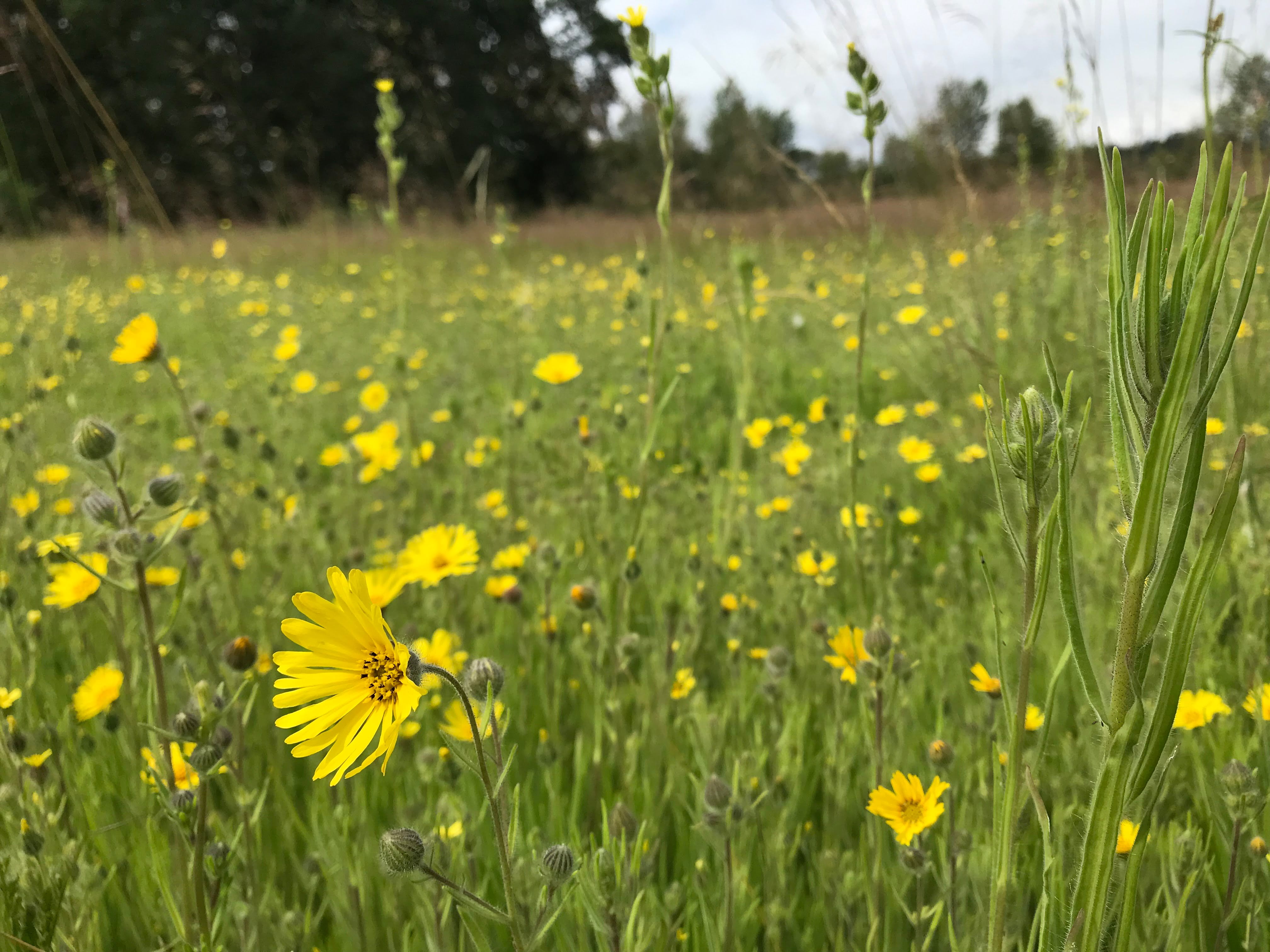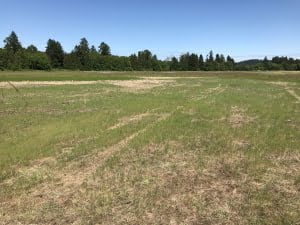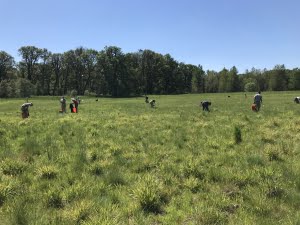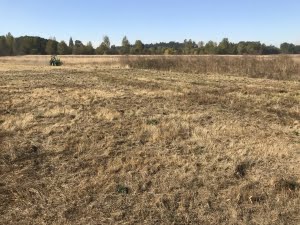
Restoring the land for wildlife and people: Seven years of restoration at Champoeg Prairie
By Michel Wiman
May 2020
Please note: IAE's work at Champoeg Prairie is currently on hold due to COVID-19.
Willamette Valley native prairies occupy less than 1% of their original range, and are now among North America's rarest ecosystems. Once blanketing the Willamette Valley with diverse forbs, grasses and shrubs, prairies have always provided critical food and shelter for pollinators, birds and wildlife. Burning by tribal peoples kept habitat open and sustained the life-giving prairie plants. However, beginning in the 1830s, settlers started converting prairies for agricultural use, plowing the rich soils annually and planting crops. These practices drastically altered the landscape of the Willamette Valley, not only removing pollinator and wildlife habitat, but also forever modifying the open spaces that provided food and vital resources for the tribal peoples who had lived in the area long before the settlers arrived. Oregon's Kalapuya tribes likely were sustained for centuries mostly by plants they harvested from prairies, with occasional meat and salmon. To this day, harvesting and preparing traditional native foods - known as 'first foods' – continues to be an integral part of tribal culture.
Champoeg, a name thought to have come from the Kalapuya word for the yampa plant, Po-Wet-Sie, is an area rich in Oregon history. Local tribes, settlers from Europe and French Canadian trappers all came through Champoeg, as it is situated on the banks of the Willamette River, not far from the Columbia River's ports, and was part of a larger prairie system, French Prairie, once known as the bread basket of the Willamette Valley. Champoeg was the site of the first organized government in the Pacific Coast region, and many wanted it to be Oregon's capital city. Champoeg Prairie was the original location of the town of Champoeg before it was destroyed by a flood in 1861.
Restoring heavily farmed lands back to diverse thriving ecosystems takes time, integrated management practices, and a village of partners and volunteers. IAE has been working with the Oregon Parks and Recreation Department (OPRD), the Confederated Tribes of Grand Ronde (CTGR) and other partners to restore Champoeg Prairie since 2013. This restoration project aims to reflect the cultural history of the site as well as incorporate the plant diversity that once thrived here. Along with partners, IAE has implemented a rigorous, multi-year strategy with a goal of converting its fields of non-native weeds such as mullein (Verbascum thapsus), thistle (Cirsium spp.), and invasive grass into thriving ecotones of native and culturally significant plants and shrubs.
Several distinct areas within Champoeg Prairie have guided different approaches to restoration, depending on their unique soils, weed pressure, and ultimate intended use. A central sandy area of the prairie, where heavy weeds were suppressing native grass establishment, was planted with native trees and shrubs. Four forb diversity blocks were established in 2014 to increase diversity, and were seeded with Oregon sunshine (Eriophyllum lanatum), selfheal (Prunella vulgaris), yarrow (Achillea millefolium), biscuitroot or barestem lomatium (Lomatium nudicaule), and checkermallow (Sidalcea campestris). The bulk of the surrounding prairie, dominated by non-native grasses, was seeded with native grasses, sedges and rushes. These seeding efforts were supplemented by the planting of over 4600 bulbs and plants of tall camas (Camassia quamash), yampa (Perideridia oregana), narrowleaf onion (Allium amplectens), mule’s ears (Wyethia angustifolia), and barestem lomatium by volunteers. Throughout the restoration process, weed control at the site has integrated hand pulling, annual mowing, and spot spraying in concert with planting natives. A prescribed burn, enacted in the main prairie by the CTGR firefighters in fall 2017, provided adequate control of many non-native forbs. Spot spraying throughout the site has controlled patches of mullein (Verbascum thapsus), tansy ragwort (Jacobaea vulgaris), and blackberry (Rubus armeniacus).
Finally, a pilot Harvest Area was established and use of herbicide was phased out in order to create a location where local tribes will be able to collect first foods and hold traditional gatherings at Champoeg Prairie. Although it will be several years before the Tribes can safely harvest below-ground plants like camas and yampa, members have already gathered tarweed (Madia spp.) from the Harvest Area. In 2018, CTGR, OPRD and IAE organized a cultural celebration in which tribal members prepared root vegetables in a traditional in-ground oven and volunteers planted additional camas and yampa.
Volunteers involved in hand weeding and planting at Champoeg Prairie have played a significant role in achieving restoration goals here. Tribal involvement in the planning and implementation of restoration and reintegration of traditional practices at Champoeg is crucial to conserving the history of this significant cultural site. OPRD’s commitment to supporting the natural and cultural heritage of Champoeg Prairie has been vital to the successes achieved so far. It is hoped that these crucial community ties will continue to ensure that the natural resources, wildlife habitat, and history of Champoeg Prairie are preserved and protected for many generations to come!
The restoration project of Champoeg Prairie has been funded by the Oregon Parks and Recreation Department, Oregon Watershed Enhancement Board, U.S. Fish and Wildlife Service, and a grant from Marion Soil and Water Conservation District. Learn more by visiting this unique gem when it is open to the public, or read more by searching for previous Champoeg blogs and reports on IAE's website.
Reference:
Lewis, D, PhD. "The Kalapuya Village of Champoeg," Ethnobotany Research LLC, June 2016. Web location.
Restoration
Research
Education
Get Involved
Contact
Main Office:
4950 SW Hout Street
Corvallis, OR 97333-9598
541-753-3099
[email protected]
Southwest Office:
1850 Old Pecos Trail, Suite I
Santa Fe, NM 87505
[email protected]
© 2024 Institute for Applied Ecology | Privacy Policy




